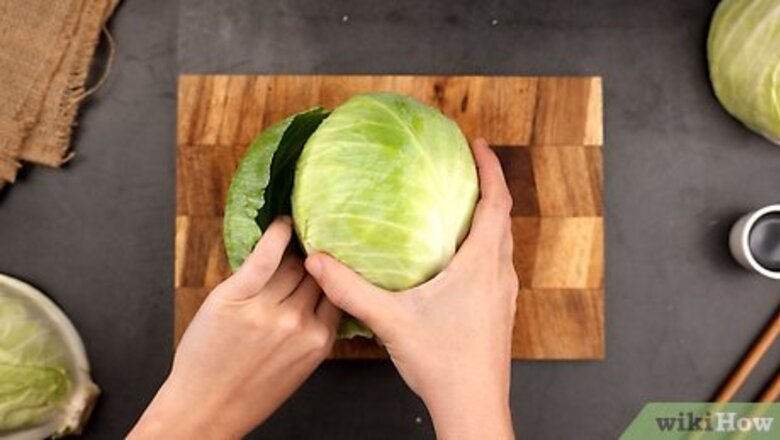
views
Preparing the Cabbage

Peel off the outer leaves from the cabbage head. Discard any leaves that look wilted, worn or discoloured. It's common practice to discard the outer leaves since it is the most exposed to dirt and damage.

Rinse the entire head of cabbage. Rise it under a stream of cool water. It's extremely important that you rinse the cabbage thoroughly as most farms use pesticides and other insecticides to keep pests and diseases away from their crops. Organic cabbages should not have been grown with any pesticides or insecticides added but it's still important to rinse and clean your cabbage to rid it of any dirt, insects, eggs, or sand that may still be on your cabbage. You can also consider soaking your cabbage in saline water or plain water for 30 minutes to better clean it.

Cut your cabbage. It is common to slice cabbage into wedges or into long, slim shreds but you can boil your cabbage in any form or shape you prefer. Be sure to cut out the stem or centre of the cabbage. Chop off any coarse stems that are at the bottom of the wedges you have cut.

Shred or chop your cabbage into the desired shape. It is common to slice the cabbage wedges into long, slim shreds but you can boil your cabbage in any form or shape you prefer. You can also boil your cabbage in wedges. Shred the cabbage on a cutting board by placing it flat side down. Slice as thick or as thin as you want the shreds to be. Use a mandolin if you have one. This kitchen utensil will allow you to shred the cabbage by sliding it across a sharp blade
Boiling the Cabbage

Bring water to a gentle boil over medium-high heat. The water should be about 3/4 of an inch (1.9 cm) deep or enough to place your cabbage in without overflowing. Don't worry about having the exact volume of water as you'll be draining any excess water out. Instead of water, you can use vegetable or meat stock to infuse flavour to your cabbage. Use liquid stock or mix powdered stock into your boiling water. A small amount of vinegar, about 10 ml, added to the water can prevent the strong odor that many people find objectionable.

Add the cabbage to the boiling water. Don't worry about overcrowding your pot. The cabbage will absorb the water and decrease dramatically in volume.

Cook uncovered at a simmer or gentle boil. Shredded cabbage can cook for about 5 minutes and wedges will take 10 to 15 minutes to cook. Keep an eye on the cabbage to ensure it does not overcook. Finished cabbage should become tender. Overcooked cabbage can release unpleasant flavours and aromas.
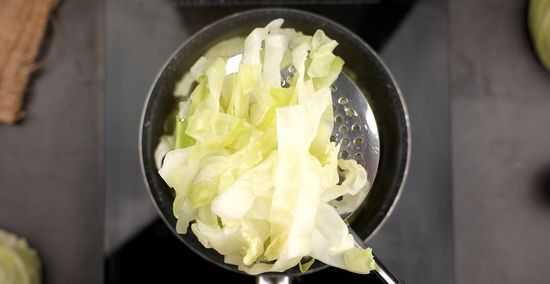
Remove the cabbage from the pot. Use a slotted spoon, or pour it into a colander to get rid of the excess water. If you've used stock to boil your cabbage, the water may be used again for soups or even to drink at its present stage.
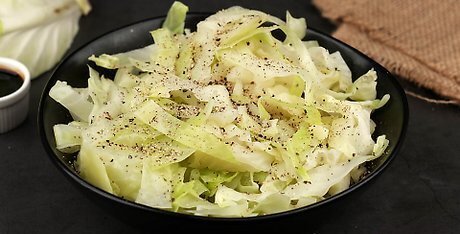
Season the cabbage. Since cabbage can be quite bitter, use salt to balance out its taste but don't add so much that the cabbage tastes salty.
Selecting Cabbage
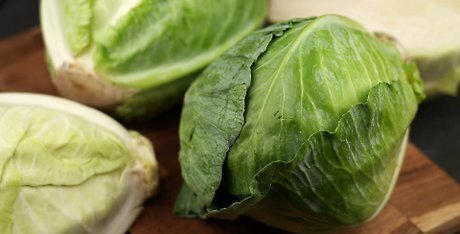
Choose the type of cabbage that you'd like to eat. Green cabbage is the most popular type of cabbage, but you can also boil red cabbage, savoy cabbage, Napa cabbage or the Chinese cabbage, bok choy. Green cabbage: The classic green cabbage has wide fan-like leaves that have a waxy rubber feel when raw. It has a sweet taste when cooked but can taste quite peppery when eaten raw. White cabbage is a type of green cabbage which is a bit mushier when cooked, so extra care needs to be taken of this variety during cooking, to keep it firm and flavorful. Red cabbage: It's known for its dark reddish-purple leaves and have a deeper flavour than green cabbage. It's often used for pickling and adding colour to dishes. Savoy cabbage: This cabbage has a softer and crinkly feel to it with deep greens and white veins. It's high in vitamin K, vitamin C, and fiber and has a mild earthy taste to it. Napa cabbage: This cabbage comes in an oblong shape and looks closely like romaine lettuce with its yellow greenish leaves and prominent white stems. It tastes much sweeter when raw than green cabbages. Bok choy: A traditional Chinese cabbage, bok choy is light and peppery or bitter to taste. When cooked, the white stems remain crisp while its leaves become soft. It is also quite watery compared to most cabbages.

Buy a head of cabbage that is firm and compact. You want leaves that are fresh and crisp, not wilted, brown or marked. The weight of the cabbage should also feel heavy for its size. Wilted or damaged outer leaves usually indicate the cabbage is old or has been handled rather roughly. The best time to harvest the freshest cabbage is during the summer. Cabbage tastes sweeter and better after frost as cabbage is usually grown in wet and cool conditions.

Try not to buy shredded or pre-cut cabbage. While this may seem convenient, cabbage begins to lose its vitamin C and other nutrients as soon as it is cut. Shredded or pre-cut cabbage may also be stored for long periods of time, depleting its taste.














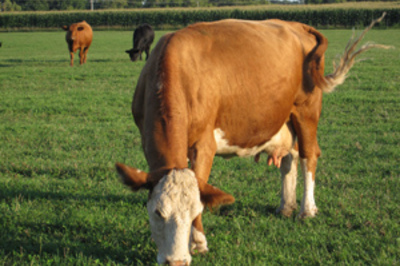



Comments
0 comment